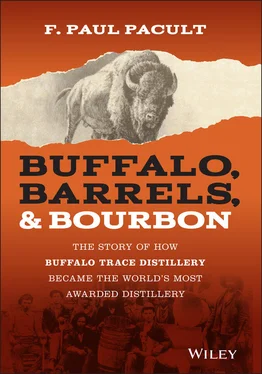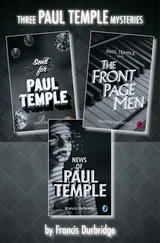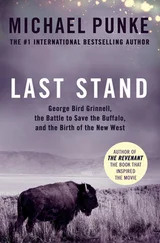1 1Boston Rare Maps. www.bostonraremaps.com.
2 2Library of Congress. American Revolution and Its Era: Maps and Charts of North America and the West Indies:1750–1789.
3 3Steve Preston. “Our Rich History: John Filson: First Kentucky Historian, Forgotten Cincinnati Founder.” Northern Kentucky Tribune, June 18, 2018.
4 4Kentucky Kindred Genealogical Research. The McAfee Brothers – Early Kentucky Pioneers. May 19, 2019.
5 5Ibid.
6 6Mary Willis Woodson and Lucy C. Lee. History of the Lee Family. Register of Kentucky State Historical Society, Vol. 1, No. 3, September 1903.
7 7Dr. Jedidiah Morse's The American Geography Map, London 1794, Kentucky Atlas & Gazetter.
8 8Image 91 of The Journal of Nicholas Cresswell, 1774–1777, Library of Congress.
9 9udge Samuel M. Wilson. Address titled “Leestown – Its Founders and Its History,” July 16, 1931, p. 392.
10 10Ibid.
11 11Lowell H. Harrison and Kames C. Klotter. A New History of Kentucky. The University of Kentucky Press, 1997, p. 33.
12 12Wilson, “Leestown,” p. 392.
3 “… As Crooked as a Dog's Hind Leg …”
IN 1894, FUTURE U.S. president and then New York governor Theodore Roosevelt minced no words in his searing assessment of the personality of General James Wilkinson, writing in his book The Winning of the West: From the Alleghenies to the Mississippi , “In character, he [Wilkinson] can only be compared to Benedict Arnold, though he entirely lacked Arnold's ability and brilliant courage. He had no conscience and no scruples; he had not the slightest idea of the meaning of the word honor … In all our history there is no more despicable character.” 1 Noted early twentieth-century historian of the western United States Frederick Jackson Turner, author of the essay Frontier Thesis : The Significance of the Frontier in American History (1893), accused Wilkinson of being “the most consummate artist in treason the nation has ever possessed.” 2 As if those words of condemnation composed long after Wilkinson's death in 1825 weren't enough, in 1908, Alfred Henry Lewis, the author of An American Patrician, or The Story of Aaron Burr , piled on, depicting Wilkinson via a supposed conversation between Burr and a Samuel Swartwout as being “… as crooked as a dog's hind leg.” 3
So then, aside from being an alleged colossal falsifier of facts, a purported traitor, and a notorious scoundrel, who was James Wilkinson? And, further, what bearing did Wilkinson and his flamboyant exploits have on the flight path of Buffalo Trace Distillery and its surrounding community?
Born in Maryland Colony in 1757, the exuberant James Wilkinson rose rapidly through guile, charm, a quick wit, and alleged dishonesty in the ranks of the Continental Army. To the consternation of many fellow officers who were more deserving and longer serving, Wilkinson became a brigadier general at the age of 20. He served, perhaps tellingly, for a short period in Canada as an aide under the American general and eventual traitor Benedict Arnold. The infamous Arnold, of course, later commanded the strategically vital fortress at West Point, which overlooked the Hudson River in New York, before defecting to join the British forces in 1780. Arnold's betrayal, which involved his planned surrender of West Point and thereby critical control of the Hudson River to the British, was heightened by the fact that he eventually fought against the American forces he once commanded.
Leaving Arnold's command in August 1776, Wilkinson then served as an aide to the well-respected general of the Continental Army, Horatio Gates. When General Gates sent Wilkinson on a time-sensitive mission to update Congress with official dispatches concerning the victory of American forces over the British at the Battle of Saratoga, Wilkinson famously kept the anxious members of Congress waiting reportedly for hours while he tended to his own private affairs in Philadelphia. Later on, he was involved in an unsuccessful conspiracy and cabal to oust George Washington as supreme commander of the Continental Army. Wilkinson's plan to replace Washington with Horatio Gates crumbled in failure as support for such a treacherous action disappeared. Appalled and outraged, General Gates forced his wayward aide to resign. But somehow through his disarming demeanor, unshakable self-confidence, and cunning, Wilkinson was able to maintain his army career until he was again forced to resign his later commission in 1781 when he ineffectively served as clothier-general to the army.
Once the Revolutionary War ended and with his checkered army career reduced to gossip fodder, Wilkinson looked westward toward the frontier. Though strapped for cash, Wilkinson looked to launch a new life chapter in a region where he was unknown and where the status of being a retired general would impress the unsuspecting. According to the superb biography of Wilkinson written by Andro Linklater, titled An Artist in Treason: The Extraordinary Double Life of General James Wilkinson , “Despite having limited funds at his disposal, within three months Wilkinson had bought 12,550 acres on the Kentucky River and filed claims for another 18,000 acres at the Falls of the Ohio, the future Louisville …” 4 Included in the Kentucky River parcels were 260 prime pastureland acres, strategically positioned one mile above Leestown on the north side of the river. Wilkinson called the settlement “Frankfort,” a gesture said to be in homage to the slain pioneer Stephen Frank, who years earlier had been the unfortunate victim of a native war party raid on a salt-boiling group along the Kentucky River. The spot of the attack, a shallow crossing, was originally dubbed “Frank's Ford” after the assault.
In 1791, Wilkinson returned to military activity by leading a band of Kentucky militiamen to the Northwest Territory north of the Ohio River to help combat the restive and rampaging native tribes in the ferocious Indian War. The Northwest Territory was still in shock from the nightmare of the Battle of the Wabash, an epic military disaster that was fought near the headwaters of the Wabash River in the morning mists of November 4, 1791. Over 1,000 Delaware, Wyandot, Shawnee, and Kickapoo warriors were led by three seasoned and wily warrior chiefs: Little Turtle, Blue Jacket, and Buckongahelas. For four desperate hours, the native warriors brutally destroyed, hacked, scalped, gutted, and shot a panicked, undisciplined army of ill-equipped and untested journeyman soldiers. The resounding defeat, considered to be one the most savage battles in North American history, left only 24 white soldiers unscathed, out of 1,000 officers, scouts, and soldiers. It remains the biggest, most famous victory of Native Americans over Euro-Americans in history. After his time serving in the Indian War, James Wilkinson departed from the army, this time with the rank of lieutenant colonel, commandant of the Second U.S. Infantry.
Wilkinson's mission in founding Frankfort with its close proximity to the key river landing at Leestown was twofold. First, he wanted to become the region's singular political powerhouse and arbiter. Second, Wilkinson longed to create a base of operations from which he hoped to make a fortune by wheeling and dealing his way through trade and commercial shipping agreements that pitted the American and Spanish governments against each other. Prior to the Louisiana Purchase when the United States doubled its size by buying the Louisiana Territory from France in 1803, the immense tract and its key highway, the Mississippi River, were controlled by Spain. In an audacious effort to have Kentucky secede from the United States in order to join the territory controlled by Spain, Wilkinson plotted and manufactured a dangerous game of treachery, spying, and double-dealing. To help grease the tracks for his negotiations between the new United States and Spain, Wilkinson secretly renounced his American citizenship in 1787, thereby swearing allegiance to the Spanish Crown, led by His Catholic Majestic Carlos IV. His nerve knowing no boundaries, he even persuaded the Spanish Crown to grant him a pension.
Читать дальше












